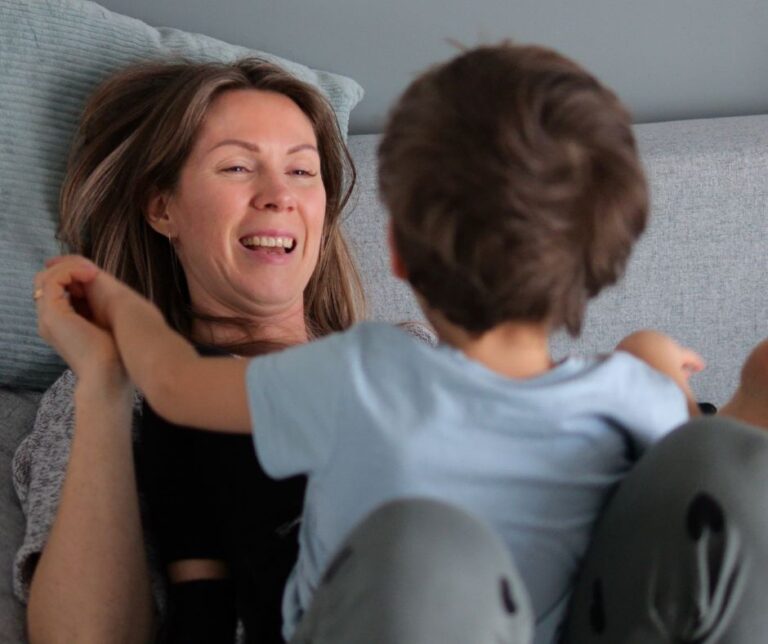The Secret Trick CEO’s use that’ll help you be a more patient parent
There are times when I’m driving my kids to dance and I want to scream.
Something about the traffic, mixed with the end of the day and oh yeah…
They’re fighting in the backseat.
“STOP IT SISSY!!!”
“I was just asking you a question (a very pointed, “why don’t you know the answer to this? Are you stupid?” question)
“I SAID STOP”
At this point, I either start talking to myself or my knuckles turn white because I’m gripping the steering wheel too hard.
We’re all stuck in a car together. I can’t escape. What do I do?
Yell? Scream? Completely lose it?
Read: Do This ONE thing to stop yelling at your kids when you’re angry
How can I be a more patient parent?
FYI: This post contains affiliate links to products I love and recommend. It costs you nothing extra if you purchase through my link, but I may get a small commission
In their book, The Yes Brain, Daniel J. Siegel, M.D., and Tina Payne Bryson, Ph.D, discuss how one simple strategy can help you cool down.
Think of yourself in two roles: the player and the spectator.
Business leaders use the spectator to make the best decisions for their companies. The CEO of LinkedIn suggests to, “Become a spectator to your own thoughts, especially when you become emotional, which is fundamental to compassion.”
I was a swimmer in high school, so I can relate this to the sport.
In a race, when I stood on the starting blocks, ready to jump in the water, I felt my nerves.
Could I be fast enough?
Would I be the last one in the pool?
Would I remember to breathe?
When the buzzer blared, I dove off the block and swam. My muscles ached. I tried to judge where my competitors were around me. I did sometimes get water up my nose.
But, my parents, the spectators, saw a different picture. They:
- saw how I came out of my turn faster than some of the other swimmers,
- cheered as I tried my best to catch up,
- and could see the conditions of the pool from the stands as well as the entire field I was up against.
When we’re ready to lose it with our kids, we need to take on both roles: The player and the spectator.
What is the player saying?
In the car, all I could think about was, “Why do they have to be so loud and argue? Don’t they know how much I do for them?”
Of course, that would get me mad! Here I am taking the time, driving through traffic and they don’t say thank you. All they do is argue.
Do you find that you tell yourself something similar? Over and over again we say this until we blow up, enter the red zone and lose it.
That’s when we need to practice using our spectator view.
What does the spectator see?
In their book, The Whole Brain Child, Siegel and Payne Bryson use the acronym SIFT to help people remember what is influencing their behavior. SIFT stands for:
Sensations: Are you too hot? Too cold? Is your clothing uncomfortable?
Images: What are you seeing right now? The traffic in front of you? Your daughter about to hit your son in the backseat?
Feelings: Are you angry? Sad? Tired?
Thoughts: What are you telling yourself? That you’re a bad mom? That you have bad kids?
These four areas will impact how you react. Your spectator can see them all with one key difference.
The spectator is kind.
The spectator can see everything the player is seeing and keep emotions out of it.
As a spectator, you observe everything going on around you and the emotions you have boiling up inside you.
For this situation, I could say, “OK, its been a long day. My shoulder hurts and I feel a headache coming on. They’re awfully loud, but they just got out of school. They’re probably hungry. I’m going to give them a snack and some water. Then, I’ll breathe deeply and stay calm so that I don’t say something I regret.”
It takes practice to be the spectator
This doesn’t come easy. The ability to assess your emotions takes time and effort. Up to now, you’ve probably been reacting. That’s the habit you’ve started and it’s hard to break a habit.
Take a deep breath. Next time you feel your anger welling up, remember the spectator and try to assess the entire situation.
















I loved The Whole Brain Child–it totally changed the way I parent for the better. I’m not even close to always perfect at following the advice I got from it, but I am getting better. Definitely going to check out The Yes Brain now; thanks for the recommendation!
Yes! The Yes brain is so SO good!!